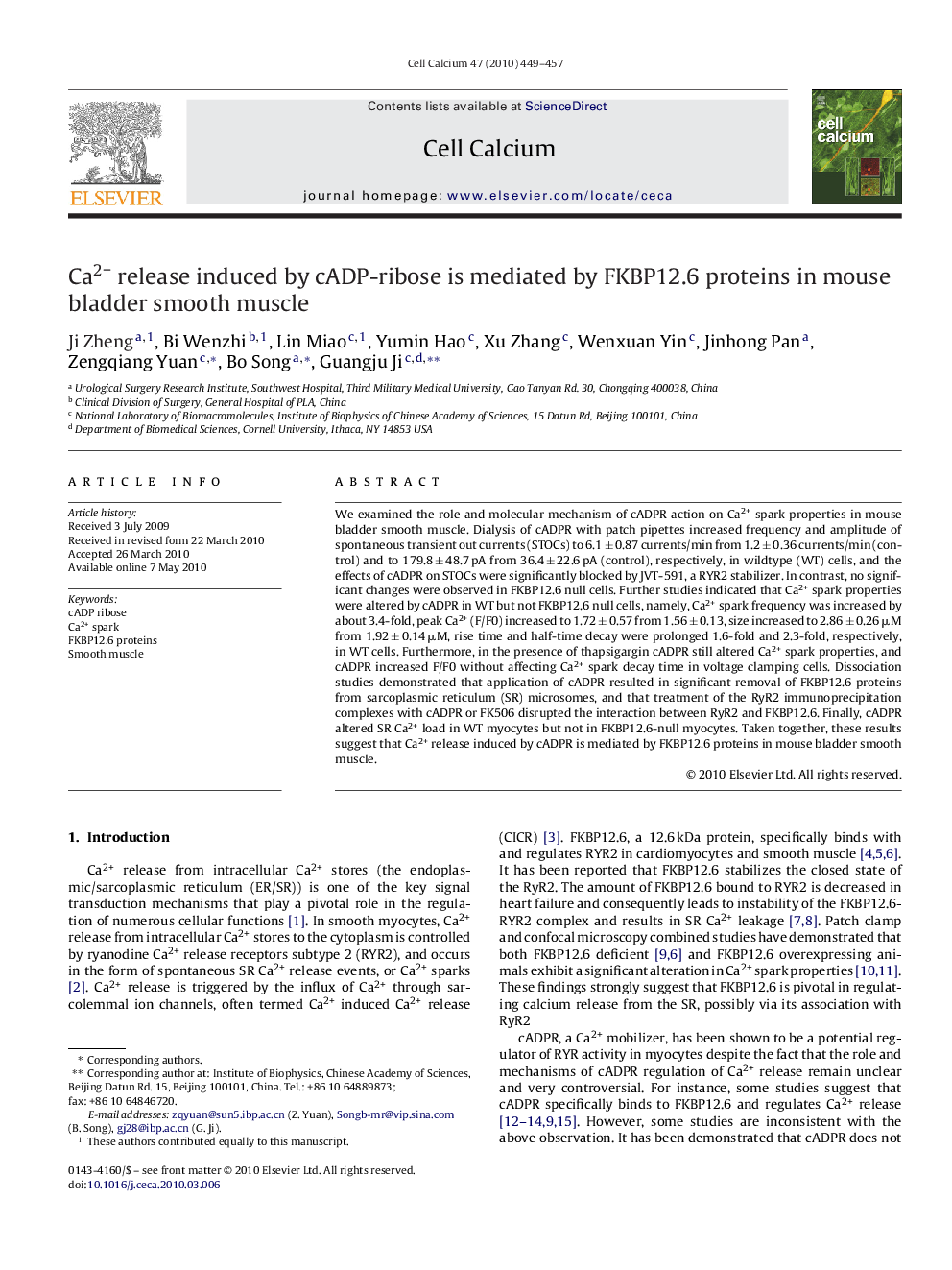| Article ID | Journal | Published Year | Pages | File Type |
|---|---|---|---|---|
| 2166303 | Cell Calcium | 2010 | 9 Pages |
We examined the role and molecular mechanism of cADPR action on Ca2+ spark properties in mouse bladder smooth muscle. Dialysis of cADPR with patch pipettes increased frequency and amplitude of spontaneous transient out currents (STOCs) to 6.1 ± 0.87 currents/min from 1.2 ± 0.36 currents/min (control) and to 179.8 ± 48.7 pA from 36.4 ± 22.6 pA (control), respectively, in wildtype (WT) cells, and the effects of cADPR on STOCs were significantly blocked by JVT-591, a RYR2 stabilizer. In contrast, no significant changes were observed in FKBP12.6 null cells. Further studies indicated that Ca2+ spark properties were altered by cADPR in WT but not FKBP12.6 null cells, namely, Ca2+ spark frequency was increased by about 3.4-fold, peak Ca2+ (F/F0) increased to 1.72 ± 0.57 from 1.56 ± 0.13, size increased to 2.86 ± 0.26 μM from 1.92 ± 0.14 μM, rise time and half-time decay were prolonged 1.6-fold and 2.3-fold, respectively, in WT cells. Furthermore, in the presence of thapsigargin cADPR still altered Ca2+ spark properties, and cADPR increased F/F0 without affecting Ca2+ spark decay time in voltage clamping cells. Dissociation studies demonstrated that application of cADPR resulted in significant removal of FKBP12.6 proteins from sarcoplasmic reticulum (SR) microsomes, and that treatment of the RyR2 immunoprecipitation complexes with cADPR or FK506 disrupted the interaction between RyR2 and FKBP12.6. Finally, cADPR altered SR Ca2+ load in WT myocytes but not in FKBP12.6-null myocytes. Taken together, these results suggest that Ca2+ release induced by cADPR is mediated by FKBP12.6 proteins in mouse bladder smooth muscle.
